Scouring the market for the perfect pair of Camino de Santiago hiking shoes while staying within budget constraints can sometimes feel like a journey in itself. Perhaps not quite a thousand miles, but quite the odyssey nonetheless. Over time, and after logging thousands of hiking miles, I have developed a sixth sense for recognizing the right shoe – almost being able to determine the hiking shoe’s worthiness for the trails from a mere glance at the shelf.
In the spirit of camaraderie that connects all who walk the Camino, I’ve taken it upon myself to research the maze of popular models, scrutinizing their strengths and weaknesses with the same discerning eye as one might examine a topographic map. I’ve also penned a succinct yet comprehensive buyer’s guide outlining the factors you must consider while shopping for Camino hiking shoes. In essence, a compass to steer your selection process in the right direction.
My favorite budget hiking shoes are the The North Face Ultra 109, an affordable pair of all-around shoes. However, if you want the absolute best, nothing beats the combination of comfort, traction, and durability offered by La Sportiva WildCat, though they are pricey.
Related: the best hiking shoes for women.
The Top 12 Hiking Shoes Reviewed
The following is a roundup of my favorite hiking shoes – from supportive models that help with carrying a full pack to ultralight options if you are walking for only a week or two:
1. Salomon X Ultra 4
Specifications:
- Weight: 13 oz
- Waterproof: Not these, but you can buy the same as waterproof
- Colors available: 2
Imagine an outsole capable of stability on any terrain that Mother Nature throws at it. This is exactly what the All Terrain Contagrip®, one of this shoe’s best features, does. It relishes in the challenge of diverse surfaces, offering both durability and a confidence-inducing grip, whether you’re treading on wet, dry, hard, or loose ground.
These look like your regular running shoes, but they have a hiking shoe tread on the bottom. So while they feel like running shoes, Salomon Ultra 4 has the sole and traction of a hiking shoe. The outsole offers robust lateral support and unyielding protection. Yet, in its strength, it never compromises on mobility or flexibility.
The Quicklace lacing system is both minimalistic and powerful, designed for one-pull tightening that’s as easy to put on as it is to take off. However, I am still finding it difficult to be a fan of these lacing systems on any hiking shoe brand. It feels like something designed for kids. That aside, there is a handy pocket for convenient storage to stop the lace from jumping around as you hike.
Furthermore, the model’s OrthoLite insole is shaped to mirror the natural contours of your foot, elevating the comfort and performance of your shoe. It delivers exceptional cushioning, breathability, and durability.
These are great long-distance hiking shoes that will have no problem with the additional weight of your backpack. Although not that important, one thing I particularly liked about these hiking shoes is their sleek design – they’re far more eye-catching than most other hiking footwear out there.
Pros
- Thoughtful, lightweight construction
- Nimble but grippy
- An appealing design
Cons
- Not the best lacing system
Here are a few comparisons I have written between Salomon and other hiking brands:
2. La Sportiva Wildcat 3.0
Specifications:
- Weight: 28.4 oz
- Waterproof: No
- Colors available: 3
The Wildcat 3.0 provides cushioned comfort for logging daily miles. Its abrasion-resistant upper and cushioned midsole absorb shock across rough trails while a sticky rubber outsole supplies sufficient grip for most terrains.
In my opinion, the model’s foot protection rivals top-scoring shoes thanks to the rigid platform and ample padding. However, a 12mm heel-to-toe drop paired with a thick midsole felt unstable at times, especially on grades. A wide toe box grants forefoot comfort though the loose heel counter had some runners swimming.
At 28.4 ounces, the Wildcat 3.0 hits the heavy end of the spectrum, contributing to its bottom-rank sensitivity score. While such heft allows all-day wear for beginners, seasoned trail runners desire a more dynamic feel underfoot. Still, such bulk never translates to a clumsy ride.
The Wildcat 3.0 blurs the line between lightweight hiking shoes and trail runners, offering cushion and grip at a reasonable price. Its foot protection and comfort serve well for rocky routes and casual jaunts alike, though competing models provide lighter, faster turnability.
Pros
- Underfoot protection rivals top shoes
- Cushioned comfort across long miles
- Durable build withstands daily wear
Cons
- Less stable than competitors
3. Vasque Breeze LT Low GTX
Specifications:
- Weight: 1.37 lb
- Waterproof: Yes
- Colors available: 4
Tipping the scales at just 13.3 ounces per shoe, the Vasque Breeze LT Low GTX hiking shoes are astoundingly lightweight. Weighing less than typical sneakers, attributes like the mesh fabric and Vibram LiteBase outsoles shed weight without compromising comfort or grip. I found that the lightweight construction aids in combatting fatigue on the trail.
The fit and feel aim to rival your favorite pair of running shoes with ample bounce, rebound, and comfortable wear that remains cool and dry even after hours of hiking. The lugs provide plenty of grip yet retain a natural stride when crossing paved sections. The only disadvantage is that the sizing does run slightly small, so order a half-size up for the best fit.
While testing, I found that the shoes provide running shoe levels of comfort paired with the protection, traction, and waterproofing needed for light hiking and trail walking. The lower cut trades ankle support for flexibility and agility, still protecting against rocks while keeping feet dry unless submerged entirely.
I’d say that Vasque Breeze LT Low GTX is a fantastic choice for those looking for a more stylish option that won’t let them down during lighter backpacking trips.
Pros
- Featherweight at 13.3 oz, yet supportive and protective
- Comfort rivals cushioned running shoes
- Waterproof and breathable for hot, dry wearing
Cons
- Sizing runs small, order 1/2 size up
4. Keen Targhee Vent Low
Specifications:
- Weight: 15.87 oz
- Waterproof: No
- Colors available: 3
There’s a good reason why so many hikers consider Keen to be one of the best manufacturers of hiking gear. The Keen Targhee Vent Low shoe is an excellent example of how to modernize a classic design. Though I find them a bit of a burly hiking shoe, at the same time, my other half loves them. Although there are newer models, like the Men's Circadia Vent and the Men's Newport Hike, the Targhee Vent Low is a best seller for a reason.
This particular shoe is an update of Keen’s older Targhee Vent model. While not groundbreaking, the new changes turn this hiking shoe into a genuinely worthwhile investment. Most importantly, Keen decided to trim down the extremely wide footbed of the previous iteration. The result is a much less sloppy hiking shoe over rough terrain.
Other features I like are the well-cushioned interior, reasonable weight, a mixture of durable leather construction upper with mesh lining for good breathability, and great odor control. Besides the ample ankle support, Keen Targhee Vent Low also offers excellent traction and plenty of support. This is a lightweight comfortable shoe that needs no break-in.
It’s a solid choice for walking the full Camino de Santiago. We also have a review of Salomon or Keen, and here is a review of Teva and Keen sandals.
Pros
- Modernized classic Targhee design
- Well-cushioned interior with a good fit
- Great for shorter backpacking trips
Cons
- Not built for narrow feet
5. Adidas Terrex AX4 GTX
Specifications:
- Weight: 1 lb 10.5 oz
- Waterproof: Yes
- Colors available: 4
The Adidas Terrex AX4 GTX strikes a stylish balance between fashion and function. Its eye-catching design incorporates recycled materials yet doesn’t compromise performance. Continental rubber soles provide plenty of wet and dry traction, while a Gore-Tex liner resists water while remaining breathable during high-intensity hiking.
I found the medium lug depth and softer rubber ideal for maintaining grip on slippery trails. On the other hand, the ripstop mesh upper should resist tears while allowing airflow to keep feet cool and dry. While not replacing a proper hiking boot, the AX4 provides ample arch support out of the box while leaving room for orthotic inserts if needed.
Sizing does run slightly small, so consider ordering a half-size up if you have wider feet. The materials seem durable, standing up well to real trail use thus far. At 1 pound 10.5 ounces per pair, the AX4 is heavier than some competitors but enables a solid, supportive build.
So for those wanting a fashionable yet fully functional light hiker, the sleek style and solid specs of the AX4 Gore-Tex make them quite easy to recommend.
Pros
- Eye-catching, recyclable design
- Wet/dry traction from Continental soles
- Waterproof yet breathable Gore-Tex liner
Cons
- Heavier than comparable shoes
6. Oboz Sawtooth II Low
Specifications:
- Weight: 1.95 lb
- Waterproof: No
- Colors available: 3
The Oboz Sawtooth II Low offers stable yet ventilated performance for hiking and backpacking without the bulk of a heavy boot. Weighing in lighter than competitors, its roomy toe box and stiff support still outperform comparable hiking shoes.
An aggressive lugged sole excels on muddy trails, while the reinforced heel cup promotes stability and helps prevent blisters. On the other hand, abrasion-resistant leather shields against scrapes, while an inner mesh liner wicks away moisture.
An innovative O Fit insole comes standard, providing ample arch support that matches or beats aftermarket options. I found that it eliminates the need for added orthotics, even accommodating options like Superfeet Greens if more stability is desired.
Sizing fits true-to-size for both men and women. Multiple width options ensure nearly all foot volumes find an ideal fit. Also, I can safely say that the materials and construction are durable and supportive for rigorous trail use – these shoes are ideal for the Camino.
For those seeking lightweight, breathable performance with the stability of a boot, the Oboz Sawtooth II earns strong marks thanks to its traction, customization, and foot protection.
Pros
- A stable feel protects against rolls and twists
- Roomy toe box allows natural splay
- Custom O Fit insole adds arch support
Cons
- Not waterproof
7. Altra Lone Peak 6
Specifications:
- Weight: 11 oz
- Waterproof: No
- Colors available: 6
The latest iteration of the beloved Altra Lone Peak refines the fit while retaining the comfort and feel previous versions are known for. Weighing 11 ounces, the synthetic upper balances flexibility with strategic structure for security and protection.
An air mesh base with laminate and stitching overlays adapts to the foot while safeguarding against debris. Compared to prior versions, I found improvements to midfoot hold and heel lockdown, offering better technical trail stability. However, I think that the performance still excels best on less rugged paths.
The ample toe box accommodates natural foot splay while the gusseted tongue effectively bars dust and rocks. On the other hand, durable lugs provide traction on most dry surfaces but lack grip when wet. However, given its price tag, I wish Altra utilized a stickier Vibram outsole.
Underfoot, the signature Altra zero-drop platform encourages low-impact landings across all types of terrain. And at 25mm, the balanced cushioning absorbs shock while retaining responsiveness for miles of comfort.
So for hikers and trail runners seeking foot-shaped, blister-free flexibility with enhanced traction, the updated Altra Lone Peak 6 makes easy miles easier.
Pros
- Refined upper improves stability
- Roomy toe box allows natural spread
- Zero-drop cushioning smooths landings
Cons
- The outsole could be sticker
8. Merrell Moab 3
Specifications:
- Weight: 2 lb
- Waterproof: No
- Colors available: 7
The latest iteration of the beloved Merrell Moab retains the extreme comfort and durability that made prior versions a hit while keeping the budget-friendly price tag. At 2 pounds per pair, they fall on the heavier side, but the suede and mesh upper provide both flexibility and structure across the miles.
Deep lugs on the Vibram sole grab terrain in both wet and dry conditions. Breathable mesh lining wicks moisture without allowing dust and debris inside. The default neutral support works for most, but the footbed can be swapped out to meet individual arch needs.
While testing the shoe, I found that the break-in period is exceptionally short – with these, you won’t have blister issues. I am also sure that a lot of hikers will appreciate the understated, versatile style across model types, including mid-high boots and sandals.
So for those seeking reputable comfort at a reasonable cost, the Merrell Moab 3 continues a legacy of cushioned reliability that covers just about any terrain.
If you want to read more about Merrell shoes, check out our Merrell vs Oboz comparison as well.
Pros
- Renowned for instant comfort
- Vibram lugs provide wet/dry traction
- Proven long-term durability
Cons
- Too flexible for heavy loads
9. Garmont Dragontail Tech GTX
Specifications:
- Weight: 2.78 lb
- Waterproof: Yes
- Colors available: 2
The Garmont Dragontail Tech GTX performs double duty as a hiking shoe and technical climbing companion. Its semi-rockered sole and low cut provide comfort across miles, while an integrated shank ensures rigidity for off-trail scrambling.
At 2.78 pounds per pair, it weighs substantially more than a typical hiker, but I found its stability worthwhile when facing uneven terrain. An outsole with deep lugs grips mud and snow with aplomb and sticks to rock faces during ascents.
The lacing system utilizes a heel harness for a locked-in feel, securing the foot across varied angles. On the other hand, ample cushioning further enables all-day wear even when carrying a heavy pack. The narrow fit accommodates squeezing into tight spaces yet may cause discomfort for wider feet.
Made to last, full-grain leather resists abrasion over the years, while the Gore-Tex liner provides reliable waterproofing when maintained properly.
If you’re looking for more aggressive performance than that offered by a typical trail runner, the Dragontail’s support certainly makes bold routes more achievable.
Pros
- Shank provides rigidity for scrambling
- Deep lugs grip snow, mud, and rock
- Full grain leather resists wear over time
Cons
- Much heavier than comparable shoes
10. The North Face Ultra 109
Specifications:
- Weight: 2.04 lb
- Waterproof: Yes
- Colors available: 2
Those who search for the best hiking boots and shoes often look for versatility. They want their hiking boot to be a great all-around product that offers support, comfort, traction, and protection on the trail. The North Face Ultra 109 shoe is one of such products – it’s an all-purpose model like no other.
One of the best hiking shoes money can buy, Ultra 109 WP feels like it’s already been broken in – the shoe is ready to hit the trail right out of the box. Its toe cap is sufficiently wide, while the high-quality insole provides comfort inside and outside the city.
In terms of support, Ultra 109 WP sports an EVA midsole and an ESS shank, which work together to promote stable and supportive movement across rough terrain. While you can’t expect the long-term durability of a regular hiking boot, this shoe is well-built and should last you for years.
Finally, Ultra 109 WP comes at a genuinely reasonable price, rivaling Merrell Moab 2 in that regard. So if you’re looking for an affordable all-around shoe, get this one – you won’t regret your decision.
Pros
- Very affordable and versatile
- Offers boot-like support and stability
- Waterproof (Hydroseal / Dryvent)
Cons
- Questionable long-term durability
11. La Sportiva Spire GTX
Specifications:
- Weight: 2 lb
- Waterproof: Yes
- Colors available: 1
The La Sportiva Spire GTX melds trail running comfort with hiking shoe protection for all-terrain versatility. Weighing 2 pounds per pair, the shoes’ compressed EVA midsoles rival cushioned trainers in bounce and shock absorption. On the other hand, an aggressive lug pattern supplies reliable traction across mud, snow, and dry rock.
Integrated shanks prevent foot fatigue, while a narrow fit enables precise foot placement when scrambling. The integrated Gore-Tex Surround membrane keeps hikers’ feet dry without compromising breathability, expelling heat through vents in the Ortholite footbed.
The abrasion-resistant mesh stood up during my testing period, though long-term durability faces questioning on rough terrain. Still, the Spire covers miles with running shoe ease, transitioning smoothly from casual trails to off-trail adventures.
If you’re seeking a high-performance crossover between a trail runner and hiking boots, the La Sportiva Spire GTX supplies speed and protection without compromising weight or comfort.
Pros
- Cushioned sole provides running shoe comfort
- Surround liner proves more breathable
- Deep lugs grip well on varied terrain
Cons
- Questionable long-term durability
12. HOKA Speedgoat 5
Specifications:
- Weight: 1 lb 4.6 oz
- Waterproof: No
- Colors available: 5
The HOKA Speedgoat 5 is a versatile, all-terrain trail running shoe suited for all distances. Weighing 10 ounces, it provides a lightweight yet cushioned ride. The mid-range price tag makes it reasonably priced for the performance.
The articulated heel reduces Achilles pressure. The midsole geometry enables smooth transitions while protecting feet from debris. Its balanced cushioning can handle long miles while still offering responsiveness and bounce.
The mesh upper has exceptional breathability and flexibility without pressure points inside. Traction from the deep Vibram MegaGrip lugs excels on ascents, technical terrain, and fast descents. The secure fit stays comfortable all run. Multiple widths accommodate more foot types.
In testing over 25 kilometers with 700 meters of elevation gain, the Speedgoat 5s performed excellently on steep climbs, flats, technical trails, and fast downhills. The grip was unparalleled compared to other tested shoes. Cushioning enabled a comfortable, protected ride for the distance.
For even more bounce, the Mafate Speed 4 has a more responsive ride but is slightly heavier and lacks the rocker. The minimal Zinal sheds weight at the expense of cushioning. The Tecton X 2 carbon plate creates a race-ready fast ride across all distances. I recommend these shoes for dry warm weather.
Pros
- Lightweight yet cushioned for all-terrain versatility
- Articulated heel reduces Achilles pressure
- Excellent grip and traction from Vibram MegaGrip
- Secure, customizable fit for all-day comfort
Cons
- Lacks a wide version for wider feet
Hiking Shoes vs Trail Runners for the Camino
As lightweight hiking footwear gains traction, more outdoor enthusiasts face the choice between low-cut hiking shoes and even more minimal trail runners. Shoes provide stiffness rivaling boots with ample lug tread for traction across mud, snow and technical terrain. Materials resist abrasion and moisture despite weighing around 1.5 pounds per pair (the average weight).
On the other hand, trail runners focus solely on nimble cushioning and sensitivity, utilizing mesh for ventilation and thinner rubber to encourage natural foot movement. With little excess, weights dip below 1 pound, compromising durability for savings. Also, less tread also loses stability on loose ground, but excels on flatter trails.
For heavy loads and uneven routes, shoes lend necessary support. But fast and ultralight hikers appreciate a runner’s nimble freedom, swapping some security for big mileage with little burden. Hybrid shoes also split differences fairly well. I would highly recommend you to test preferences against expected carry weight and intended terrain – it’s the only way to end up with type of footwear that won’t give you troubles.
Best Hiking Shoes Buying Guide
These are the most important factors to keep in mind when shopping for hiking shoes:
Comfort
Preventing blisters and infections makes comfort critical when selecting hiking shoes. Perforated uppers and breathable fabrics allow sweat vapor to exit rather than pooling inside. Many modern versions combine durable yet heavier leather with lighter synthetics placed strategically – using the best material for each area based on wear and breathability needs.
Full-grain leather brings abrasion resistance and waterproofing at the cost of weight and breathability, and split-grain trims expenses while compromising durability. On the other hand, nubuck leather buffs full-grain for flexibility yet retains sturdiness.
Synthetics breathe easier, dry faster, and weigh less than leather but show wear sooner. And vegan materials use no animal products yet mimic leathers well when eco-consciousness matters most.
Test prospective shoes to ensure intended terrain and conditions won’t overwhelm moisture-wicking capabilities for blister-free miles. My recommendation for those seeking ultimate comfort is La Sportiva Spire GTX, a model widely praised for its cushioning.
Shoe Sizing
An ideal fit determines hiking shoe comfort and performance. Test sizing at the end of the day when feet are most swollen, wearing the sock type you’ll use outdoors. I found that trying multiple brands can help in finding what suits your foot shape best.
Ensure no heel slippage and at least 1/2 inch behind toes when standing. The extra room accommodates swelling on the trail. Favor larger if between sizes, since materials won’t stretch much. Also, consider socks to fine-tune the fit – thicker for loose shoes, thinner for tight.
Finally, swap out insoles over time as the footbed wears down before the shoe itself does. Adjusting thickness helps nail the exact volume and support you need.
Weight
Modern hiking shoes champion comfort through featherweight builds, catalyzing record mileage. Durable yet thin fabrics and low ankle cuts optimize ounces, with top shoes weighing as little as 2 pounds per pair – nearly half the heft of traditional boots. This weight savings pays dividends by the date’s end, explaining the shift among thru-hikers and peak-baggers to minimalist shoes.
The pared-down bulk does compromise long-term durability for most models. And some still prefer the extra support of burly boots for rugged terrain and large loads. Yet quality lightweight materials provide ample stability for most day hikes and short overnighters. Test for intended conditions, but for covering wide ground quickly, durable airiness brings welcome relief compared to heavy leather shafts of old. The key to big miles? Travelling light, starting with the shoes on your feet.
Support & Stability
These parameters are equally important. How much support and stability a particular shoe can provide depends on several factors, such as the shape and thickness of its midsole, insole, and outsole. Models such as Merrell Moab 3, Arc’teryx Aerios FL GTX, and Salomon X Ultra 4 are great in this department.
As long as you go with good-fitting, lightweight hiking shoes, you will not notice the areas where your foot and ankle are being supported. (Shoes should be snug and not tight.) Usually, the best way to understand the support hiking shoes give you is to put them on after wearing sneakers for a few hours. You will then feel support at the end of your Achilles tendon, around under your ankle, and down the side of your foot. Also, assuming your shoe fits well, you will notice that your foot does not slide back and forward at any time – your foot stays in place whether you are going up or down a hill (you might get a little slippage on very steep slopes).
Waterproofing
Waterproof membranes block liquid water from soaking your feet while allowing sweat vapor to pass through, keeping feet dry and comfortable in varied conditions. Yet non-waterproof materials boast better breathability. When trudging through puddles or dewy grass, membranes keep your feet warm and withstand dampness that might otherwise cause blisters.
But in already hot environments – like the glorious environs of Northern Spain, where you’ll be walking the Camino de Santiago – added insulation from waterproof liners can overheat feet since they inhibit adequate airflow, leading to a buildup of sweat. If hiking primarily in warm weather or on dry trails, choose shoes without membranes or ones that utilize more breathable membranes for better temperature regulation.
Assess your terrain and typical conditions to determine if the benefits outweigh the costs for your needs. Both types have pros and cons depending on conditions, but you can’t beat dry feet for comforting long miles on rugged trails. If you decide to go with Gore-Tex shoes, La Sportiva Spire GTX – which I’ve described above – is a fantastic option.
Traction & Grip
Choosing shoes with ample traction and support prevents injury while enabling stability across miles. Shoes with deep, thick lugs better grip muddy or loose terrain, reducing slips. Distinct heel brakes also supply downhill control.
Despite assumptions, stiff shoes don’t automatically excel in support. Compressible heels and twistable soles indicate insufficient stability for heavy loads. Yet overly rigid shafts often hinder natural motion, causing blisters and fatigue.
For most hikers – including the Camino pilgrims – strengthening exercises combined with shoes balancing flexibility and resistance optimizes comfort and safety. Test stability by squeezing sides and twisting soles. Seek targeted lug depth and brakes for your expected terrain. Also, don’t forget that dialed-in shoes empower peak performance across varied conditions. As for the models with genuinely excellent traction, make sure to check out Adidas Terrex Swift R2 GTX, Garmont Dragontail Tech GTX, and Vasque Juxt.
The Upper Material
Hiking shoe uppers utilize a variety of materials to balance durability, water resistance, breathability, and weight based on intended usage. Synthetic nylon woven with open mesh creates lightweight panels for better airflow at the cost of longevity. Full grain leather gets brushed to form pliable nubuck leather – more flexible than glossy leather while retaining abrasion resistance. Yet nubucks still suffer stuffiness versus mesh. Thus many models incorporate both, with durable leathers in high-wear areas and breathable synthetics elsewhere.
Assess your priorities to see if hybrid mixed-media uppers provide the ideal balance. Light nylons shed ounces but face durability questions on rough terrain. Sturdy leathers endure abuse yet lack ventilation. In my experience, testing shoes across expected conditions gives the best sense of which features optimize hiking happiness over the long trail.
Toe Protection
Rocks and roots mandate hiking shoes to guard toes from painful impacts. Full rubber caps prevent most knocks, while minimalist trail runners often cut back coverage. And approach shoes wrap extra rubber around tips for scrambling readiness. In my experience, even well-groomed trails hide hazards behind stunning vistas, so distraction risks remain.
Ensure prospective pairs at least shield fronts from downward pressure, if not sideways knocks. An ounce of protection outweighs a pound of recovery – it’s as simple as that. Broken toes can completely ruin any hiking experience – including the Camino – so balance features and risks accordingly. But don’t leave tender tips exposed without cause – the trail gives little mercy to missteps, so be prepared.
Midsoles & Outsoles
The midsole provides cushioning and determines stiffness. Stiff shoes prevent feet from wrapping around rocks, boosting comfort on uneven terrain. Common materials include:
- EVA (ethylene vinyl acetate) – Cushy, light, affordable. Varying densities enable targeted support.
- Polyurethane – Firmer and more durable for backpacking/mountaineering.
All outsoles use rubber, sometimes fortified with carbon in technical shoes for hardness and grip. Traction depends on:
- Lug pattern – Deeper lugs improve backcountry traction. Wider spacing sheds mud.
- Heel brake – Distinct heel zone prevents sliding downhill.
The ideal midsole balances cushion and support, while the outsole mates grip and stability for the expected trail and pack weight. Boots excel at stabilizing loads, but the rigidity that enables miles of security can cause discomfort off-trail. Know your primary usage and terrain to optimize features through the needed compromise.
Insoles
A lot of hiking shoes ship with generic insoles that may bother certain feet. Thankfully, swapping aftermarket alternatives like Superfeet can customize fit and comfort.
New inserts tweak height under arches to perfect support needs and increase or decrease cushioning based on shock absorption preferences. Thinner and thicker models also fine-tune snugness for tricky volumes.
With options tailored for running, skiing, hiking boots, and more, there are insole alternatives that enhance stability across activities. Before spending big on new shoes for nagging pains, test if fresh insoles provide relief instead.
Breathability
Waterproof membranes excel at blocking external liquid from seeping shoes, yet airflow suffers as a result. Sweat buildup causes discomfort, while soggy socks take longer to dry versus highly breathable versions. Even touted innovations like Gore-Tex Surround can’t match the ventilation of mostly mesh designs.
Still, liners do prevent soakings when trudging through puddles and mud. And I found that the models featuring thin fabrics peppered with mesh panels balance water resistance with temperature regulation fairly well. But for hot and dry trails, non-waterproof shoes reign supreme in cooling power.
Assess your expected terrain and climate to determine if better breathability outweighs weather protection – and vice versa. Both boast advantages that shine through depending on conditions. Test prospective pairs to ensure the features align with priorities and planned adventures. An optimal balance empowers performance regardless of the forecast.
Lacing System
Laces and eyelets play a crucial role in hiking shoe fit, comfort, and blister prevention. Poor systems loosen frequently, forcing readjusting on the trail. Ineffective heel locking also rubs and pains over miles. Simply swapping laces can help, but dealing with intrinsic design flaws will require you to choose another model.
Quick-pull systems like the Salomon X Ultra 4 offer convenience but even tension can bother finicky feet needing custom tightness zones. That’s why you should test by walking stairs in prospective shoes, ensuring integrated lacing secures feet without hot spots through each phase. Proper lockdown prevents discomfort, so don’t overlook this foundational closure component.
Price
Not all hiking shoes are created equal – some are budget-oriented, and some come packed with several convenient features. For example, if you’re looking to save money, you won’t go wrong with The North Face Ultra 109 WP, an affordable pair of all-around shoes. If you want the best of the best, however, nothing beats the combination of comfort, traction, and durability offered by La Sportiva Wildcat.
The Best Shoes for the Camino de Santiago
Whether you’re only occasionally hitting local trails or you’re off for an epic outdoor adventure on the Camino, you want your feet to be comfortable and protected from rough terrain. And for that, you need a pair of quality hiking shoes.
The best shoes for you will likely not be the best shoes for everyone – try them on, and make sure they fit you well. I wrote this guide while thinking about the best shoes for the Camino de Santiago. The shortest time I have walked on the Camino is two weeks, but usually, I walk for four weeks. Therefore, I want a sturdy hiking shoe that will provide good cushioning for the whole time.
Hopefully, my review of the market’s most popular options will help you find the proper footwear for your needs. Remember that your shoes take more punishment than all your other hiking gear combined, so choose wisely!
And remember that choosing the right pair of shoes is not enough – you also need the right socks. Check out my Merino Wool vs Coolmax comparison to learn more about different hiking sock fabrics.

I love hiking, backpacking, and camping. From the Camino de Santiago to the West Highland Way in Scotland or simply a great day hike on the weekend. Hiking refreshes me, my mind, and keeps my body reasonably fit. So far I have walked three Camino routes and many other long distance hikes in the UK, Canada, and around the rest of Europe. One of the best was my hike up Ben Nevis.

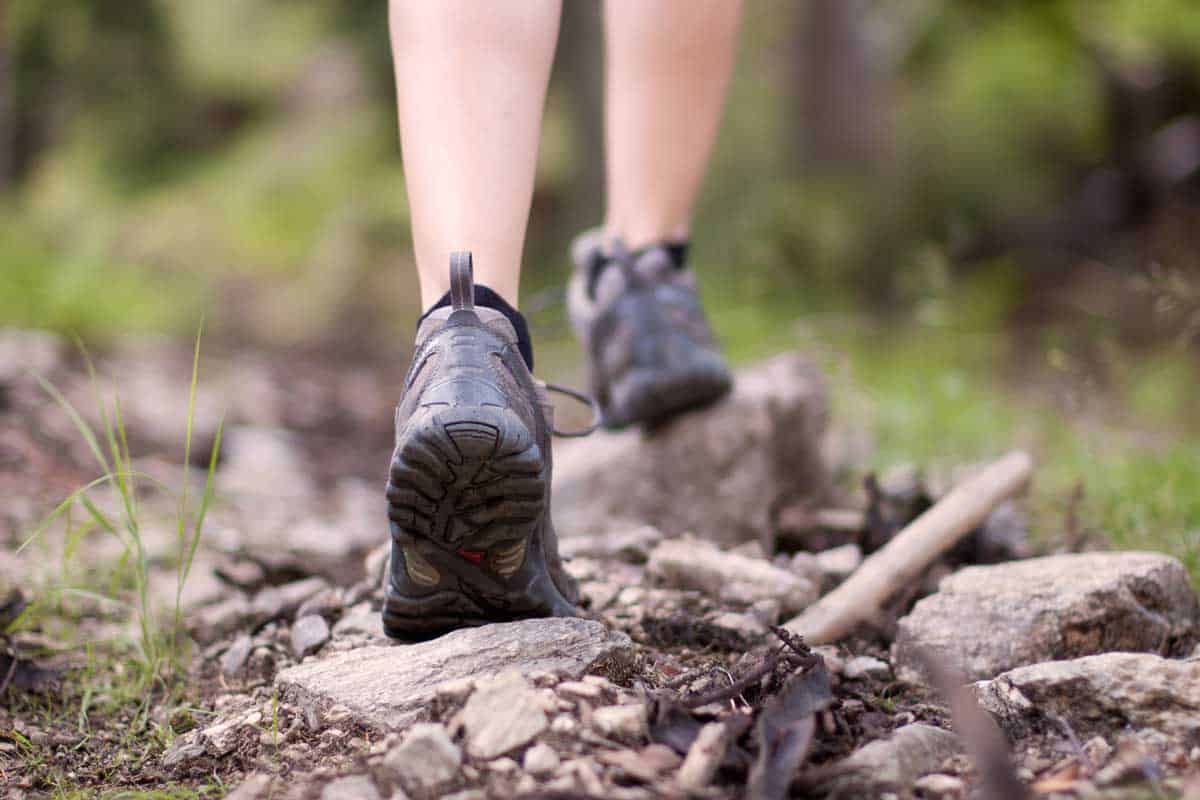
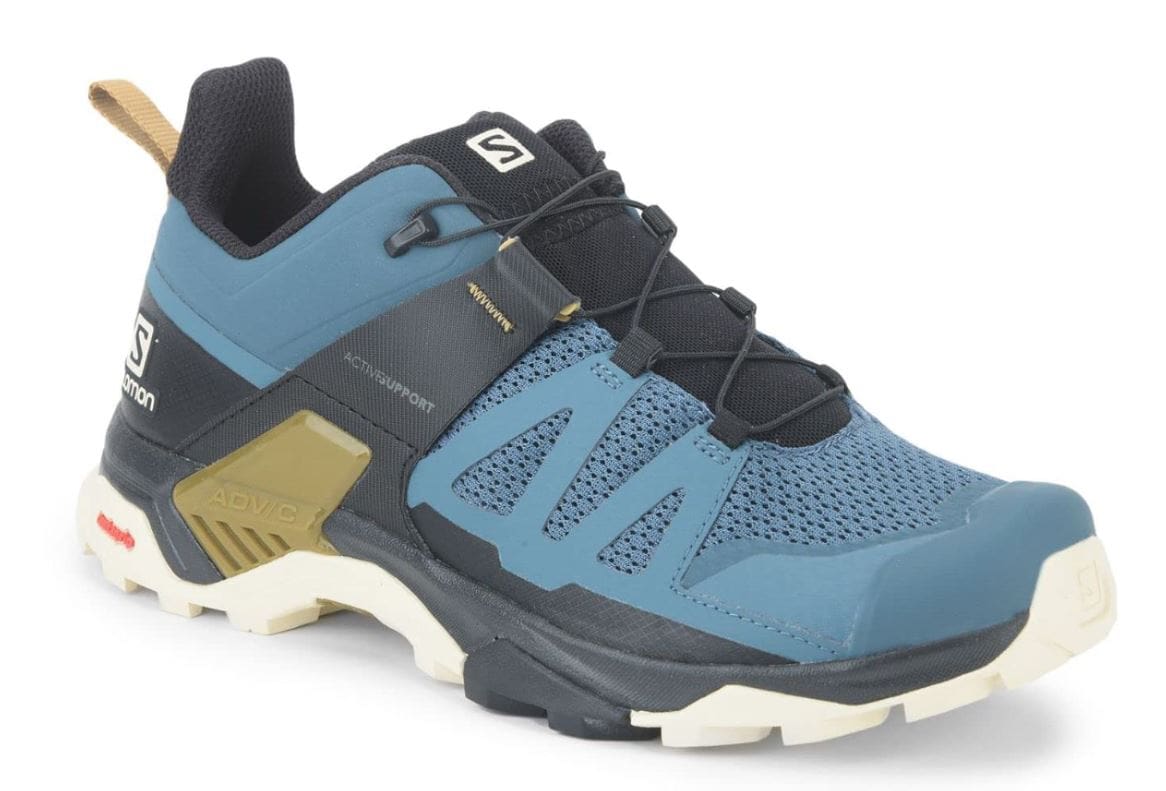
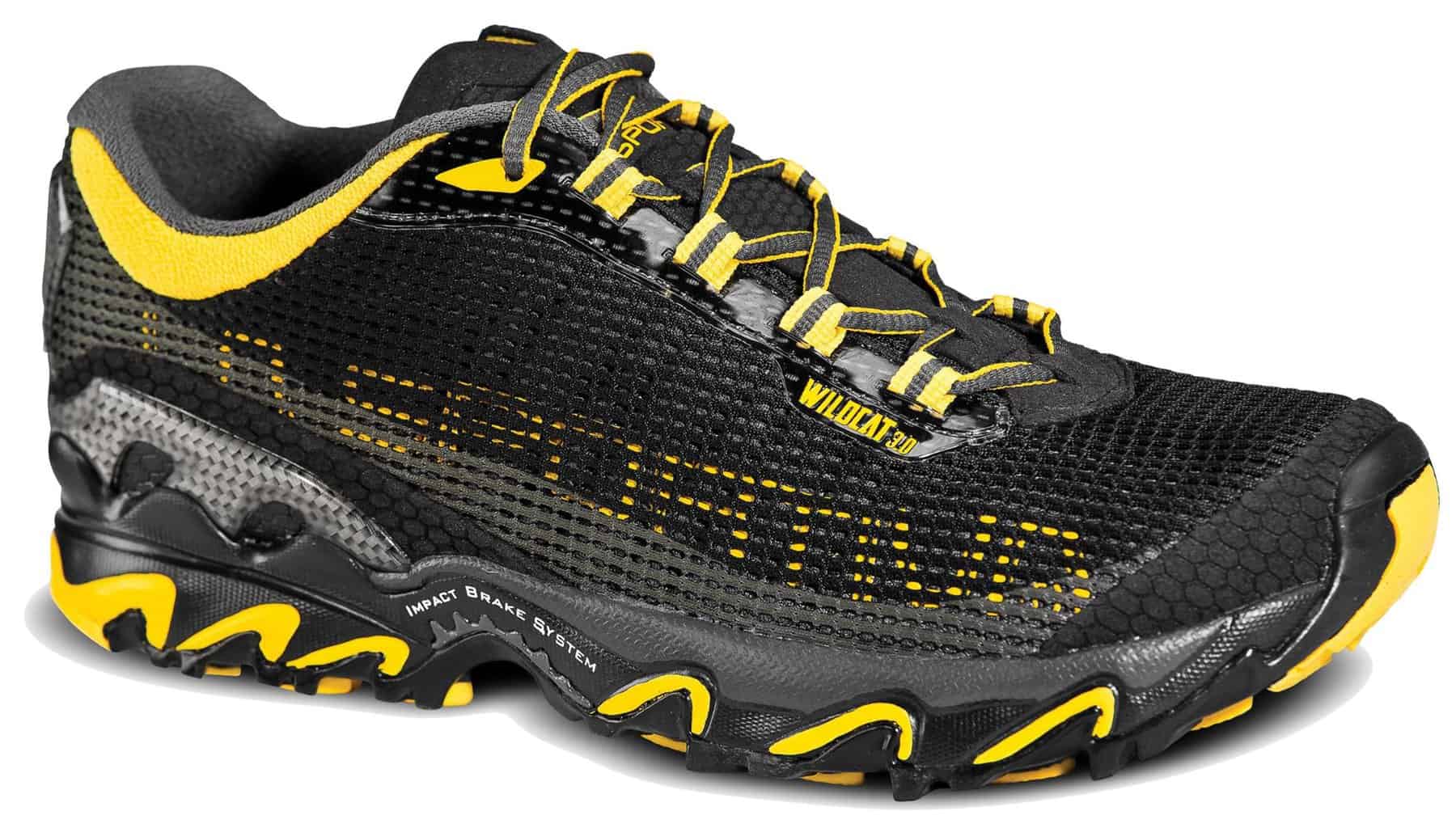
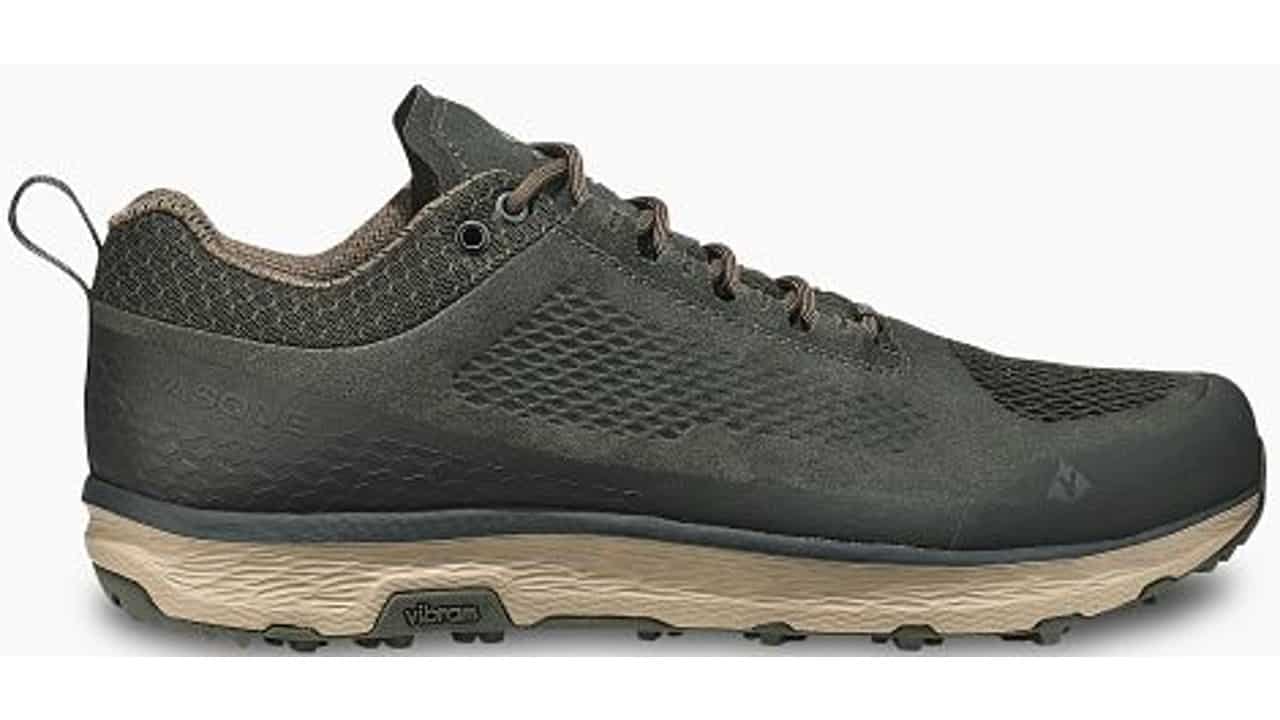
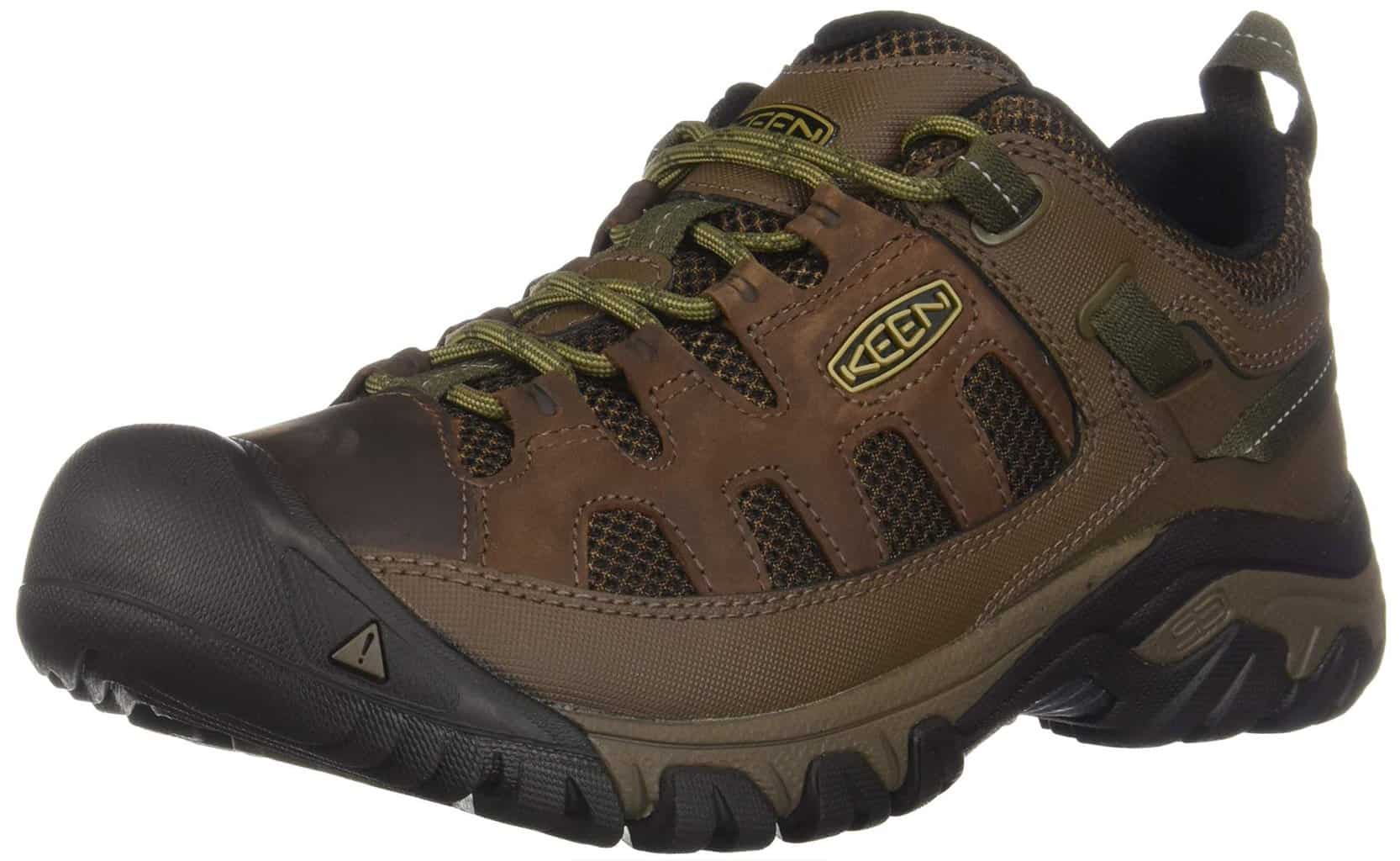
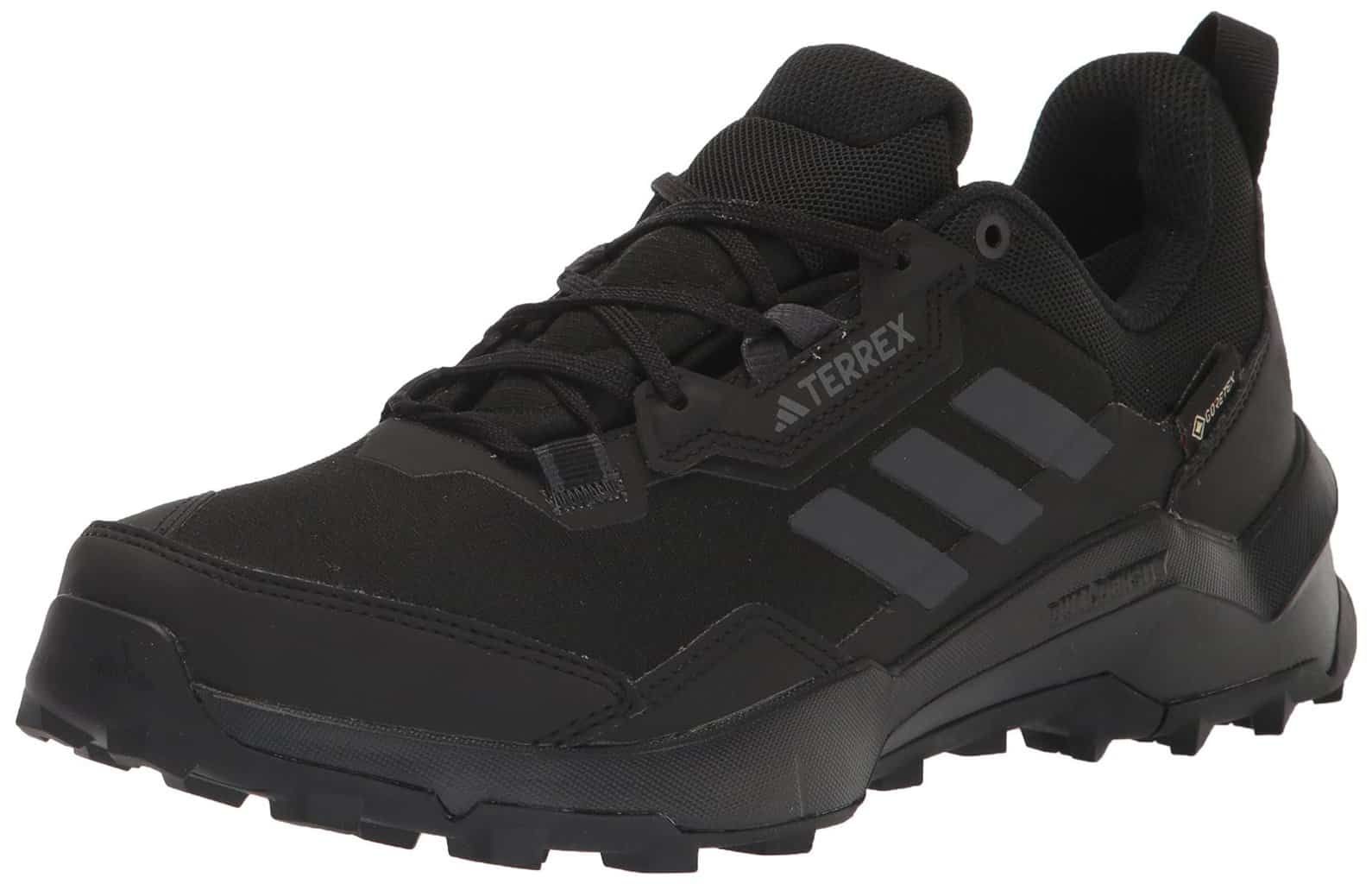
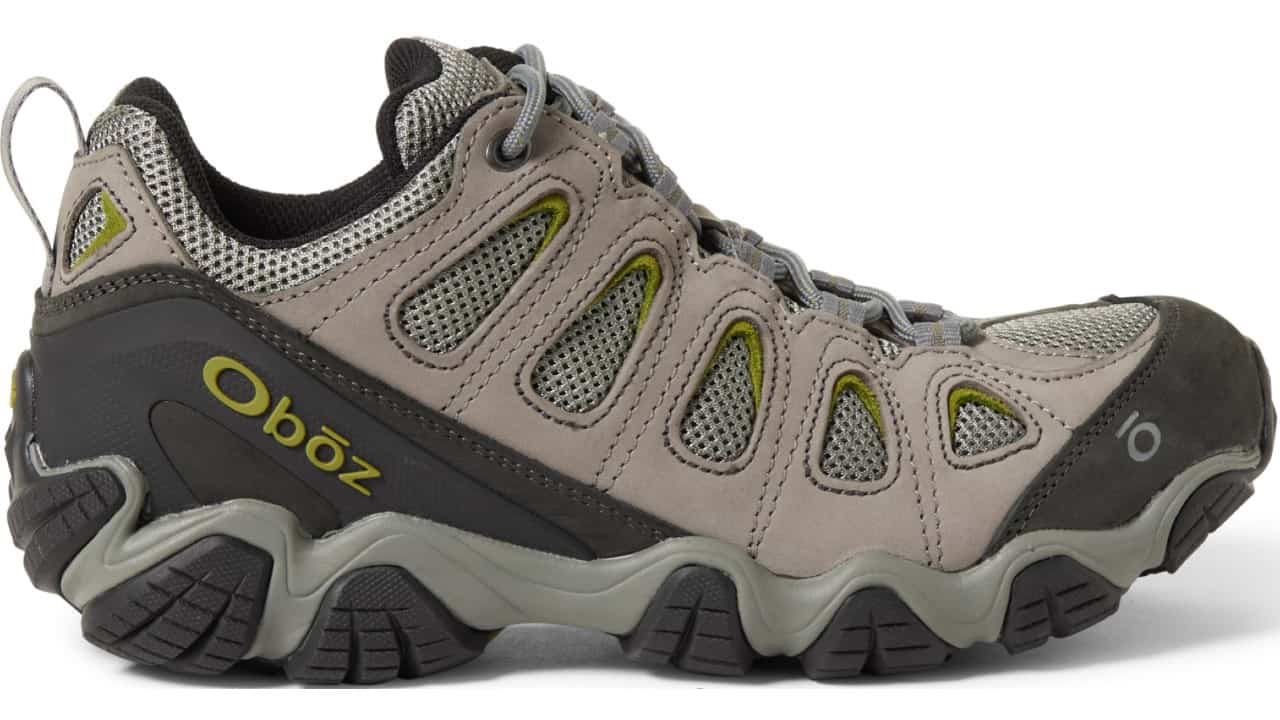
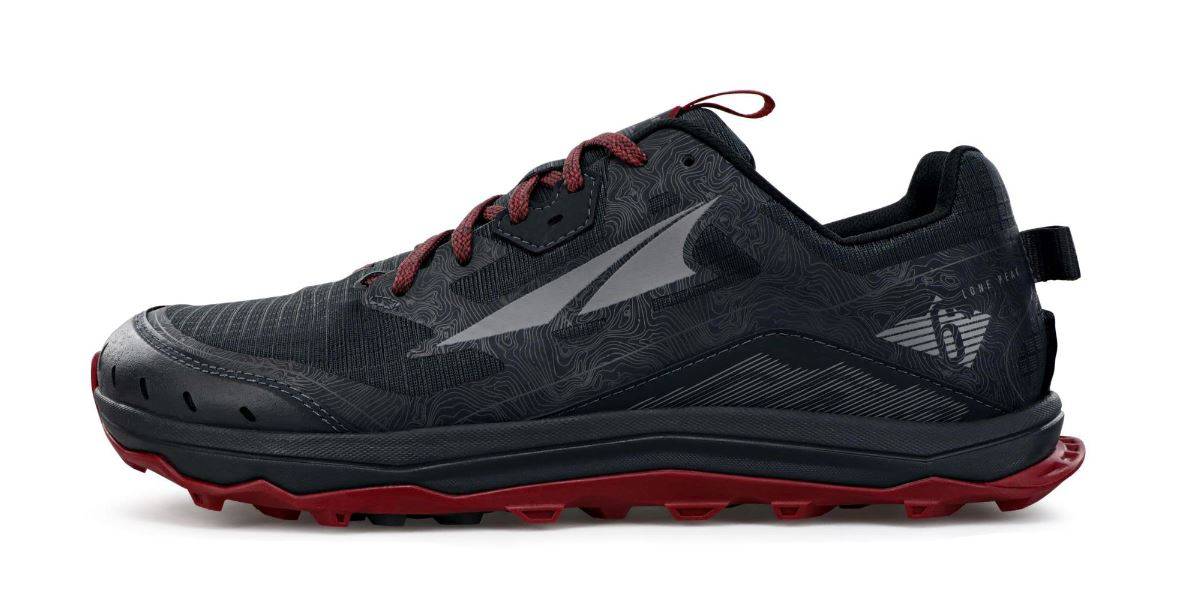
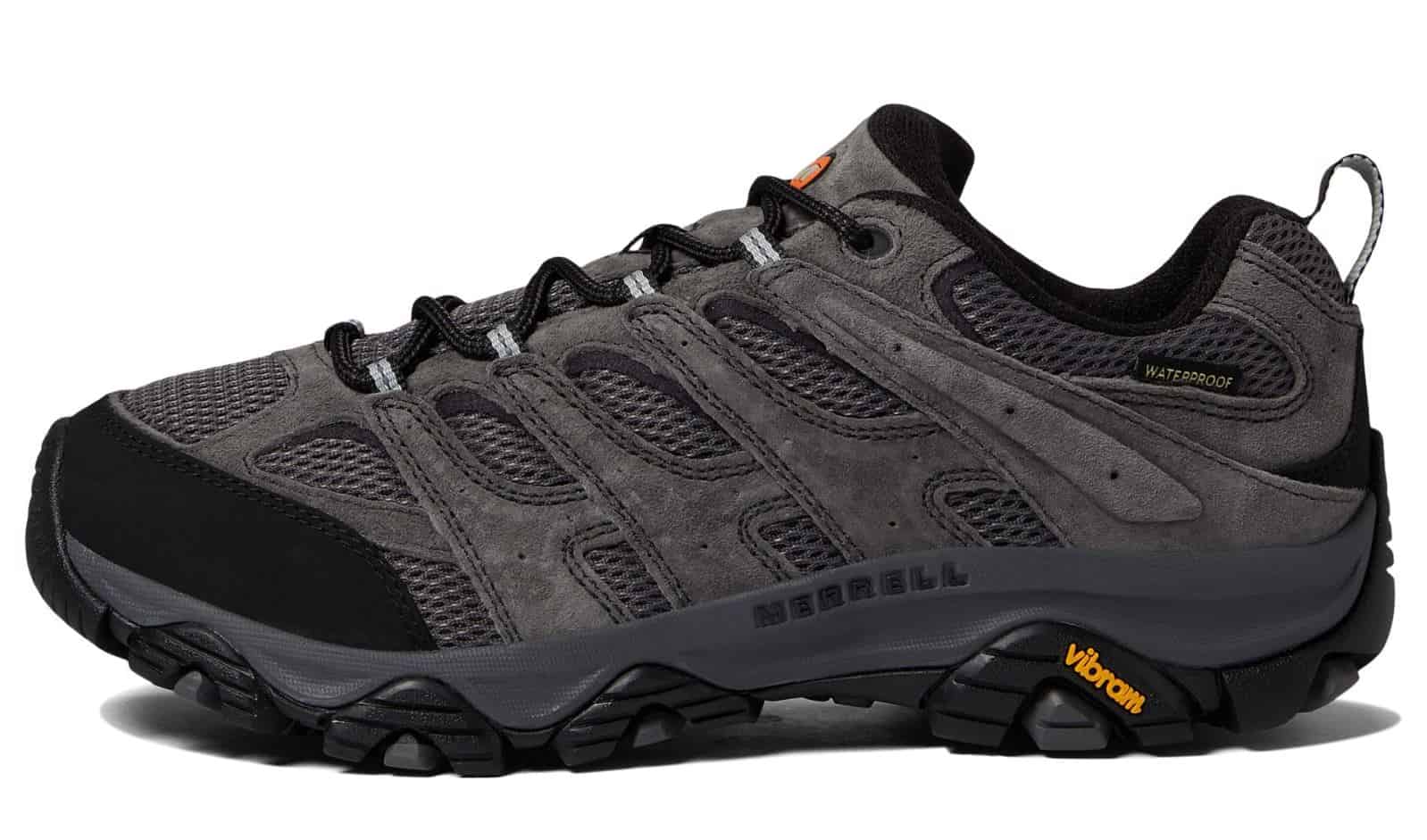
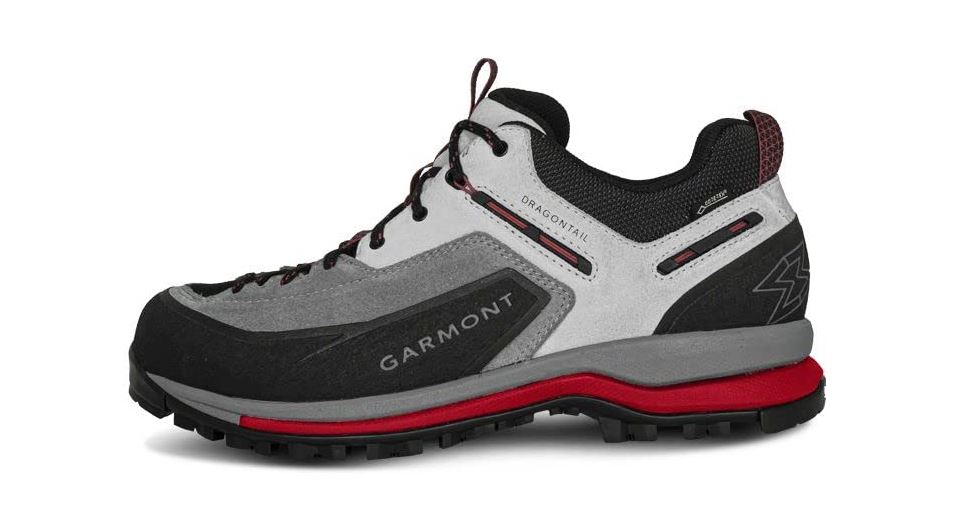
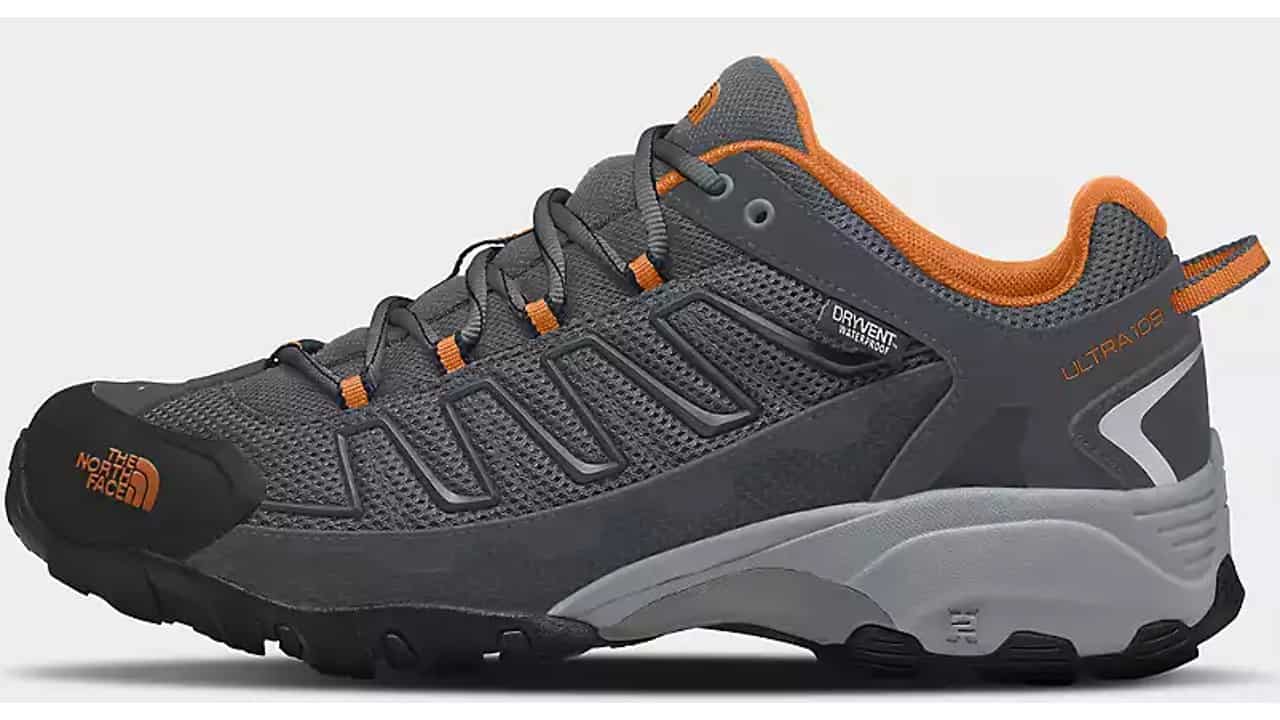
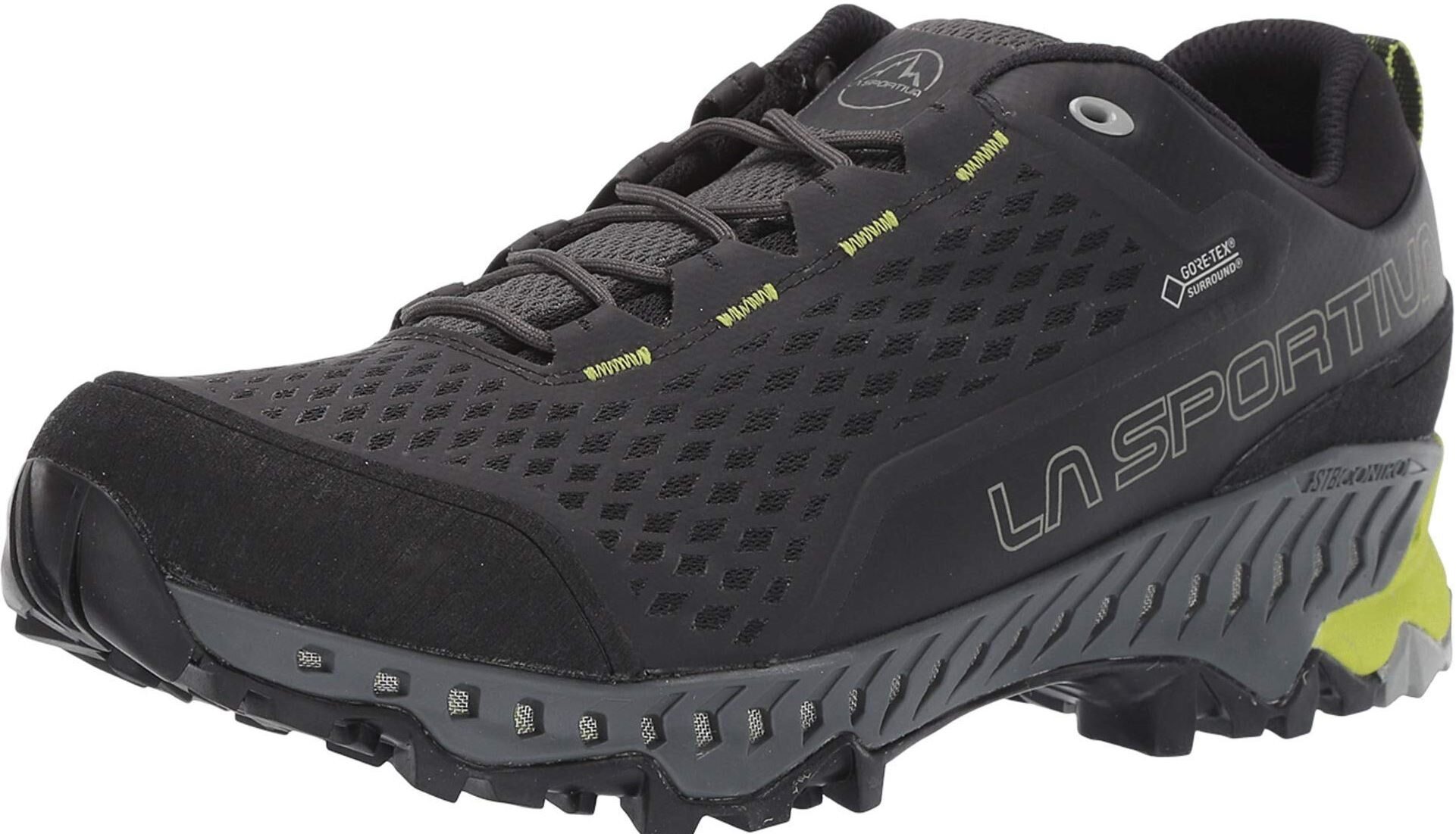
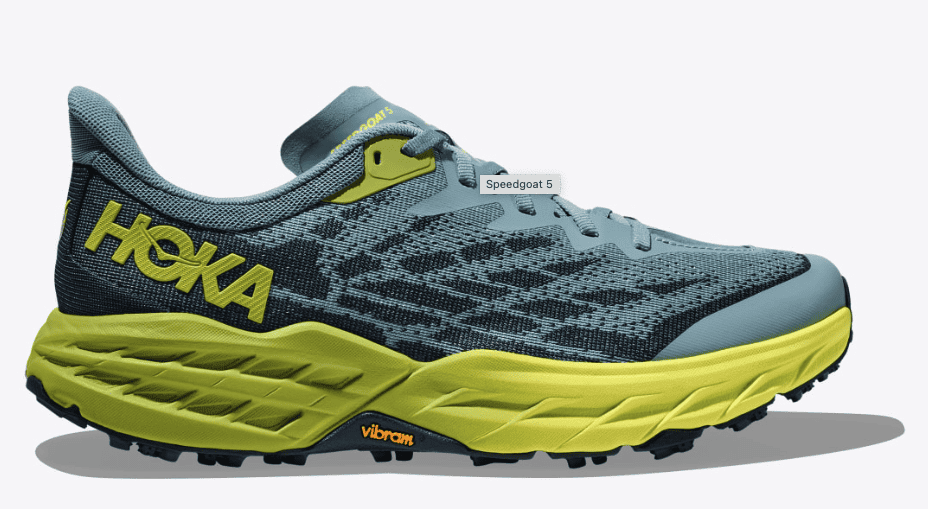
Glad to see Hoka’s Speedgoat on the list. These 69 year old feet loved them for the Portuguese Camino and Fatima on Oct 2921. Use Zimberland leathers on Frances in 1998 but too heavy and I got blisters. Because Caminos were very low on Pilgrams, I only meet 12 Americans and 4 had Speedgoat! I have the mid tops and going to buy another one as soon as I can find a pair.
Thanks! I went The Camino Frances 760 km with “Danner Mountain 600″ without blisters. They are very comfortable and light. Only on the last day did they soak for several hours in the heavy rain. But they withstood 760 km ;).
Everyday I go hiking with” ECCO Women’s Xpedition III Gore-Tex Hiking” and I feel like in slippers.
I have a pair of Merrill’s with 300 or so miles on them, got them last November. They’ve been good for me, comfortable, no blisters. Scheduled to walk The Camino in October. Should I get new shoes or wear what I’ve got?
Hello Frank – best wishes for a great Camino in October. FWIW, the answer to your question would seem to depend on how the tread is on your Merrills. I bought La Sportivas (more on that below) in late 2021 and used them on four hiking trips (England in May 2022, SJPP to Burgos September 2022, Burgos to Santiago March-April 2023, and Tuscany/Umbria May 2023). The tread at the back is now worn flat, and I’ll replace them before any other long hikes. The reason, especially wrt to the Camino, is that I want good tread in back for the downhills, some of which are plenty steep. As for the ratings, I’d question one aspect of the La Sportiva review – I found the insoles on the La Sportiva to be of poor quality/low cushioning and the balls of my feet took a pounding on the Camino. I replaced the insoles at a hiking shop in Logrono, but the damage had already been done. When I talked about this later to an associate at REI, she agreed that the La Sportiva insoles are not very good and suggested I should have stayed with my previous favorite brand, Oboz. Anyway, in my experience, good insoles are a must for the Camino, as are (for those of us of a certain age!) compression socks, but that’s another story. Buen Camino! Ray
I actully live in Galicia, and I go out walking every day, and I’ve done the Camino Frances twice. The weather can be very wet in Galicia at any time of year but especially in the winter. In fact, we just had a month where it rained heavily every day (October / November 2003). I’ve had 2 pairs of top-rated ‘Camino’ boots with ‘waterproof’ liners – from different top brands, and they both leaked when used on my daily dog walks. They had a lot of stitching, which I suspect is where the water got in. The first line of defence is whatever you use to treat the outside of the boot. Studying the instructions for my top-brand boots, I noticed that it said to let the boots dry out, brush the mud off, and then spray them with their product. (BTW on the camino Frances from SJPP I only saw one albergue with a boot dryer, and that was in Tricastela) Next, let it dry completely before use. Just how does that work when you are walking every day? The solution for me, was to find a more traditional boot, made of smooth leather on the outside. At the end of a wet day, sponge the dirt off and let them dry as much as possible overnight. In the morning you can apply the wax / oil product – even if the boots are still a bit damp. The downside is that even modern leather boots do weigh a little more than a lightweight fabric boot. Personally, I think it’s worth it. But there again you might be lucky and go 5 weeks without much rain.